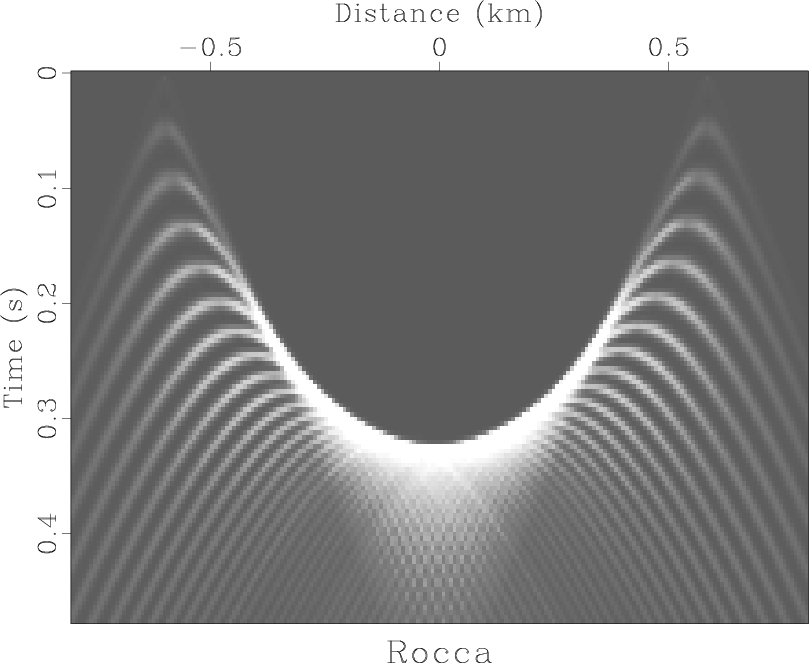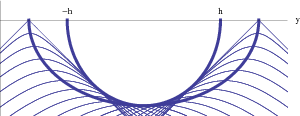|
|
|
|
Dip and offset together |
The strong smear function that you see in Figure 8.18 is Rocca's DMO+NMO operator, the operator that converts a point on a constant-offset section to a zero-offset section. The important feature of this operator is that the bulk of the energy is in a much narrower region than the big ellipse of migration. The narrowness of the Rocca operator is important since it means that energies will not move far, so the operator will not have a drastic effect and be unduly affected by remote data. (Being a small operator also makes it cheaper to apply). The little signals you see away from the central burst in Figure 8.18 result mainly from my modulating the ellipse curve into a sequence of dots. However, noises from sampling and nearest-neighbor interpolation also yield a figure much like Figure 8.18. This warrants a more careful theoretical study to see how to represent the Rocca operator directly (rather than as a sequence of two nearly opposite operators).
|
frocca
Figure 18. Rocca's prestack partial-migration operator is a superposition of hyperbolas, each with its top on an ellipse. |

|
|---|---|
|
|
To get a sharper, more theoretical view of the Rocca operator,
Figure 8.19 shows line drawings of the curves in
a Rocca construction.
It happens, and we will later show,
that the Rocca operator lies along an ellipse
that passes through ![]() (and hence is independent of velocity!)
Curiously,
we see something we could not see on Figure 8.18,
that the Rocca curve ends part way up the ellipse
and it does not reach the surface.
The place where the Rocca operator ends
and the velocity independent ellipse continues is, however,
velocity dependent as we will see.
The Rocca operator is along the curve of osculation in Figure 8.19,
i.e., the smile-shaped curve where the hyperbolas reinforce one another.
(and hence is independent of velocity!)
Curiously,
we see something we could not see on Figure 8.18,
that the Rocca curve ends part way up the ellipse
and it does not reach the surface.
The place where the Rocca operator ends
and the velocity independent ellipse continues is, however,
velocity dependent as we will see.
The Rocca operator is along the curve of osculation in Figure 8.19,
i.e., the smile-shaped curve where the hyperbolas reinforce one another.

|
|---|
|
rocca2
Figure 19. Rocca's smile. (Ronen) |
|
|
|
|
|
|
Dip and offset together |